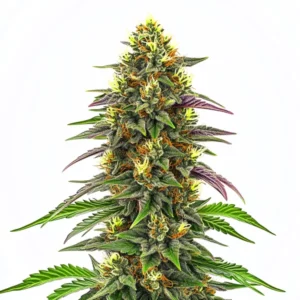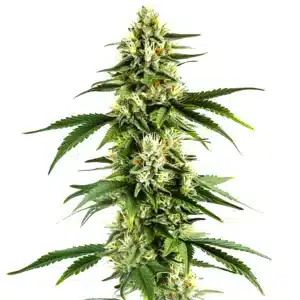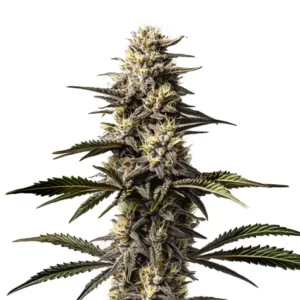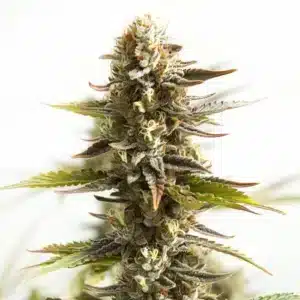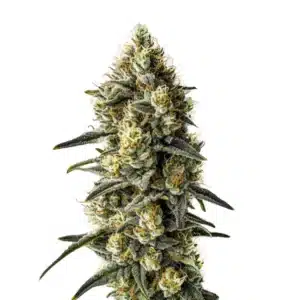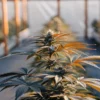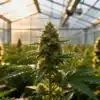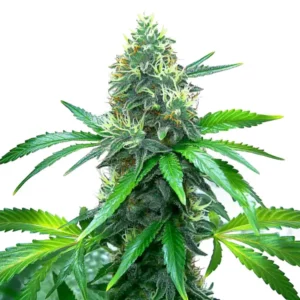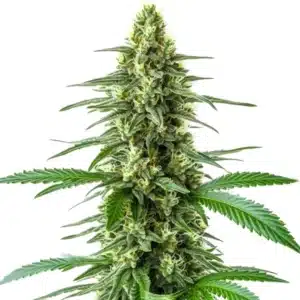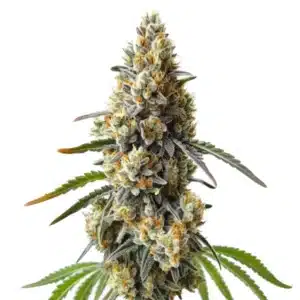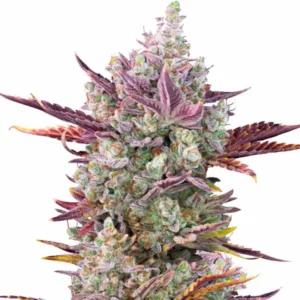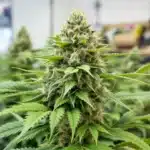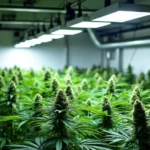
Cannabis Cultivation: How to Take Care of a Cannabis Plant
When it comes to growing cannabis, there’s a lot more to it than just planting a seed and waiting for it to grow. Whether you’re a beginner or an experienced grower, knowing how to take care of a cannabis plant is crucial to achieving the best possible harvest. From choosing the right strain to harvesting your buds, each step in the growing process requires attention to detail. In this comprehensive guide, you’ll learn everything you need to know to ensure your cannabis plants thrive, yielding the highest quality buds.
Getting Started with Cannabis Plant Care
Choosing the Right Cannabis Strain
The first step in learning how to take care of a cannabis plant is selecting the right strain. The strain you choose will determine not only the effects of the final product but also how the plant will grow. Some strains are more forgiving to beginners, while others may require more advanced techniques.
Recommended Strains
Maui Waui
|
|
THC | 14% - 19% (Medium) |
|
|
Type | Feminized |
|
|
Yield | Medium |
|
|
Phenotype | 20% Indica / 80% Sativa |
Maui Waui HMC Edition
|
|
THC | 14% - 19% (Medium) |
|
|
Type | Feminized |
|
|
Yield | Medium |
|
|
Phenotype | 20% Indica / 80% Sativa |
For beginners, it’s often best to start with a strain known for its resilience, such as Northern Lights or Blue Dream. These strains are known for their ability to withstand common growing challenges, making them ideal for those still learning the ropes. On the other hand, experienced growers might opt for strains like OG Kush or Girl Scout Cookies, which may require more care but offer rich rewards in potency and yield.
The strain you choose should also align with your goals. If you’re looking for a relaxing, sedative effect, indica-dominant strains are your best bet. For an uplifting, energetic high, sativa strains are the way to go. Hybrids offer a balance of both and can be tailored to suit specific needs.
Selecting the Ideal Growing Environment
Your cannabis plant’s environment is the foundation of its health. One of the biggest points of pain for many growers is not providing the optimal conditions for their plants, leading to stunted growth or poor yields. Whether you’re growing indoors or outdoors, the environment you create will directly impact your success.
For indoor growers, controlling factors like light, temperature, and humidity is easier but requires the right equipment. A well-ventilated grow tent with adjustable lights and a reliable temperature control system can create the perfect indoor environment. You need to ensure your plants receive consistent light cycles and maintain an ideal temperature range of 70-85°F during the day and 55-70°F at night.
Outdoor growing presents different challenges but can be just as rewarding. The main advantage is the natural sunlight, which is the best light source for cannabis. However, you’ll need to choose a location that receives plenty of direct sunlight and has good air circulation. Protecting your plants from extreme weather conditions and pests is also crucial.
Preparing Your Growing Medium
The growing medium is where your cannabis plant will get most of its nutrients, so choosing the right one is critical. Soil, coco coir, and hydroponic systems are the most common mediums, each with its advantages.
Soil is the most traditional and user-friendly option, especially for beginners. It’s forgiving and provides a natural buffer against nutrient imbalances. Organic soil mixed with compost or other organic matter can give your plants the nutrients they need throughout the growth cycle.
Coco coir, made from coconut husks, offers excellent water retention and root aeration. It’s a popular choice for those looking to optimize their growing environment, as it allows for more control over nutrient delivery. However, it requires more frequent feeding since it’s an inert medium.
Hydroponics is a more advanced growing method where plants grow in a nutrient-rich water solution. While it can lead to faster growth and bigger yields, it’s also less forgiving and requires careful monitoring of pH and nutrient levels.
Promos & Deals
Planting and Germination
Germinating Cannabis Seeds Successfully
Germination is the first critical step in growing cannabis. It’s where your seeds sprout and start to develop into seedlings. Knowing how to take care of a cannabis plant starts with mastering the germination process.
There are several methods to germinate cannabis seeds, but the most reliable is the paper towel method. Place your seeds between two damp paper towels, and put them in a warm, dark place. Within 24-72 hours, you should see the seeds crack open and tiny roots (taproots) emerge.
Once the seeds have sprouted, they need to be planted immediately to avoid damaging the delicate roots. A key point of pain for many beginners is damaging these roots during the transfer, which can kill the seedling. Handle the seeds carefully, using tweezers if necessary, and plant them root-down in your chosen medium about ½ inch deep.
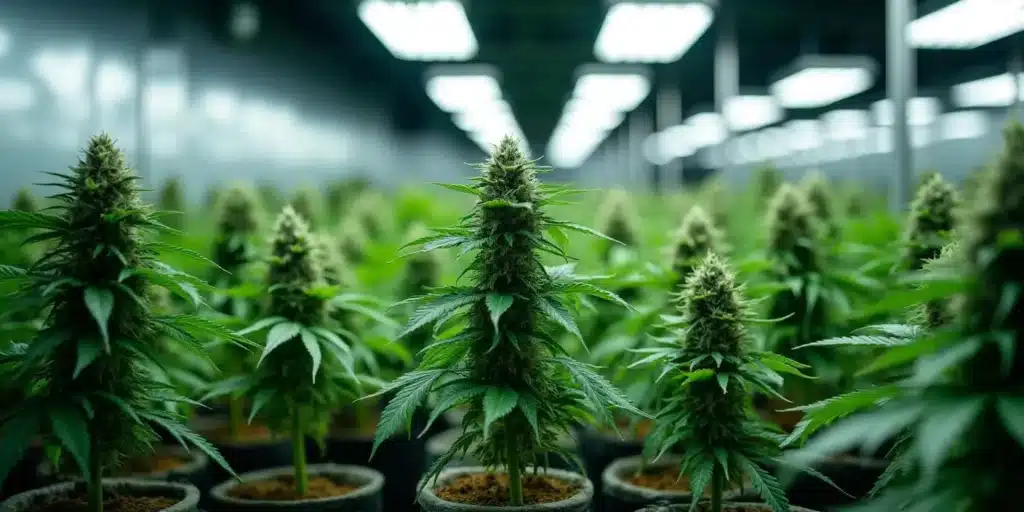
Transplanting Seedlings into Soil or Containers
After germination, the next challenge is transplanting the seedlings. This stage is critical because young cannabis plants are particularly vulnerable to stress. Knowing how to care for them during this stage can make or break your grow.
Start by filling your container or growing space with your chosen medium. Make a small hole in the center of the medium, just big enough to accommodate the seedling’s roots. Gently place the seedling in the hole, being careful not to damage the roots, and cover it lightly with soil or medium.
Water the newly planted seedlings gently, ensuring the soil is moist but not waterlogged. Overwatering at this stage is a common mistake that can lead to root rot or other issues. Keep the seedlings in a warm, well-lit area, but avoid direct sunlight or intense light that can stress the young plants.
Tips for Encouraging Strong Root Development
Healthy roots are the foundation of a healthy cannabis plant. Without strong roots, your plant won’t be able to absorb the nutrients it needs, leading to poor growth and low yields. Knowing how to take care of a cannabis plant includes realizing how to promote root health.
To encourage strong root development, start with a well-aerated medium that allows roots to breathe. Overwatering is a common mistake that can suffocate roots, so be mindful of your watering practices. Ensure the medium is evenly moist but never soggy.
Root stimulants can also help promote root growth. These products contain beneficial microbes and nutrients that support root health and development. Adding mycorrhizae fungi to your soil or medium can significantly boost root growth by forming symbiotic relationships with the roots, enhancing nutrient uptake.
Nutrient and Watering Requirements
Knowing Cannabis Nutrient Needs
Cannabis plants have specific nutrient needs that change throughout their growth cycle. Providing the right nutrients at the right time is essential for healthy growth and maximizing yields. This section will guide you through the basics of cannabis nutrition.
During the vegetative stage, cannabis plants require higher levels of nitrogen to support leafy growth. Phosphorus and potassium are also necessary but in smaller amounts. As the plant transitions to the flowering stage, its nutrient needs shift, requiring more phosphorus and potassium to support bud development, while nitrogen levels should be reduced.
Knowing how to take care of a cannabis plant means realizing that too much or too little of any nutrient can cause problems. Nutrient deficiencies can manifest as yellowing leaves, slow growth, or other issues, while nutrient burn from overfeeding can damage your plants.
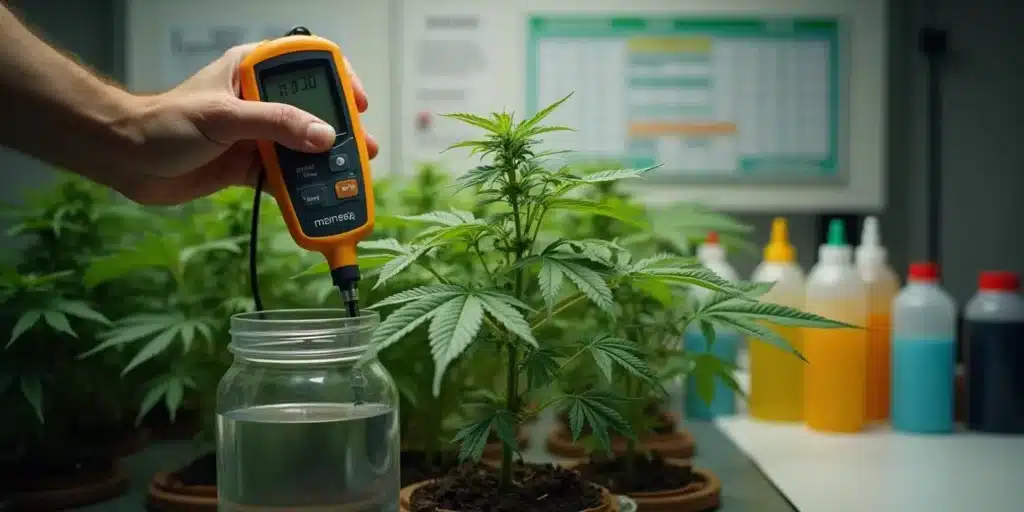
How to Water Cannabis Plants Properly
Watering is one of the most critical aspects of cannabis plant care. Both overwatering and underwatering can stress your plants and stunt their growth. Mastering the art of watering is key to knowing how to take care of a cannabis plant effectively.
The amount of water your plants need will depend on several factors, including the size of the plant, the stage of growth, the type of medium, and environmental conditions. Generally, it’s better to water less frequently but deeply, ensuring that the water reaches the root zone.
A good rule of thumb is to water when the top inch of the soil feels dry to the touch. When watering, do so slowly and evenly, allowing the water to soak into the medium rather than running off. If you’re using containers, ensure they have proper drainage to prevent water from pooling at the bottom, which can lead to root rot.
Recognizing and Correcting Nutrient Deficiencies
Nutrient deficiencies are a common challenge in cannabis cultivation, and identifying them early is key to maintaining healthy plants. Each deficiency shows specific symptoms, and being able to recognize these will help you take corrective action quickly.
Nitrogen deficiency, for example, typically manifests as yellowing of the lower leaves, while phosphorus deficiency might cause dark, purplish discoloration. Potassium deficiency often results in leaf edges turning brown and crispy.
When you spot a deficiency, it’s important to adjust your feeding schedule to address the specific nutrient that is lacking. In some cases, flushing the medium with pH-balanced water before adjusting nutrient levels can help reset the plant’s nutrient uptake.
Light and Temperature Control
Providing the Right Amount of Light
Light is the primary energy source for cannabis plants, driving photosynthesis and growth. Without adequate light, your plants won’t thrive. Ensuring your cannabis plants get the right amount of light is crucial to their development and yield.
For indoor growers, artificial lighting such as LED, HID, or fluorescent lights are the most common choices. LED lights are energy-efficient and emit less heat, making them ideal for maintaining a stable environment. Position your lights at the correct distance from the plants to prevent light burn, typically around 18-24 inches for most LED lights.
Outdoor growers rely on natural sunlight, which is the most effective light source. However, it’s essential to ensure your plants receive at least six hours of direct sunlight each day. Planting in a location with unobstructed sunlight will give your cannabis the best chance to thrive.
Managing Temperature and Humidity
Temperature and humidity are critical factors in creating an optimal growing environment for cannabis. Knowing how to take care of a cannabis plant includes maintaining these environmental conditions within the ideal range.
Cannabis plants prefer a daytime temperature between 70-85°F during the vegetative stage and slightly cooler during flowering, around 65-80°F. Temperatures outside this range can stress your plants, slowing growth and reducing yields.
Humidity should also be carefully controlled. During the vegetative stage, higher humidity levels of 40-70% are beneficial. However, as the plants enter the flowering stage, lower humidity levels of 40-50% are preferable to prevent mold and mildew on the buds. Using a hygrometer to monitor humidity levels and a dehumidifier or humidifier to adjust them can help maintain the perfect environment.
Adjusting Light Cycles for Growth Stages
Cannabis plants have different light requirements depending on their stage of growth. Knowing how to take care of a cannabis plant involves adjusting the light cycles to optimize growth and flowering.
During the vegetative stage, cannabis plants thrive with 18-24 hours of light per day. This extended light period encourages rapid growth and prepares the plant for flowering. When you’re ready to induce flowering, reduce the light cycle to 12 hours of light and 12 hours of darkness. This change simulates the natural light conditions of late summer, signaling the plant to start producing buds.
Consistency is key when managing light cycles. Sudden changes or interruptions in the light schedule can stress the plants, potentially leading to hermaphroditism or stunted growth. Automated timers can be a valuable tool for ensuring that your plants receive consistent light exposure.
Pruning and Training Techniques
The Importance of Pruning for Healthy Growth
Pruning is an essential technique for managing cannabis plants and maximizing their yield. Proper pruning removes excess foliage, allowing light and air to reach the lower parts of the plant, promoting healthier and more productive growth.
Start pruning your cannabis plants during the vegetative stage. Focus on removing any yellowing or damaged leaves and thin out areas with dense foliage to improve air circulation. This process helps prevent mold and pests, which thrive in humid, overcrowded conditions.
Regular pruning also encourages the plant to direct its energy towards producing bigger, more potent buds. However, be careful not to over-prune, as removing too much foliage can stress the plant and slow its growth. Aim to remove no more than 20-30% of the plant’s foliage at a time.
Low-Stress Training (LST) for Cannabis Plants
Low-stress training (LST) is a technique used to manipulate the shape and size of cannabis plants to optimize light exposure and space. Unlike high-stress methods, LST involves gently bending and tying down the branches to create a more even canopy.
To perform LST, start by gently bending the main stem and side branches downwards and securing them in place with soft ties or garden wire. This technique exposes the lower branches to more light, encouraging them to grow upwards and produce more buds.
LST is particularly useful for indoor growers with limited vertical space, as it allows the plant to spread out horizontally. This method can also increase yields by creating multiple main colas, rather than just one. Regularly adjust the ties as the plant grows to maintain an even canopy and prevent the branches from snapping.
High-Stress Training (HST) Methods
High-stress training (HST) techniques involve more aggressive methods of shaping and managing cannabis plants. These methods can stress the plant but are effective in controlling its growth and maximizing yield.
Topping is a common HST method where you cut off the top of the main stem to encourage the plant to grow two new main colas instead of one. This technique should be done during the vegetative stage when the plant has at least 4-6 nodes. While topping can increase yield, it also requires the plant to recover from the stress, so timing is crucial.
Another HST technique is super cropping, where you gently crush the inner tissues of the stem to make it more pliable, allowing you to bend it into the desired shape. This technique increases light exposure to the lower branches and can result in a more robust and bushy plant. However, it’s important to be gentle to avoid breaking the stem entirely.
Both LST and HST methods can be used in combination to maximize the effectiveness of your training efforts. These techniques, when applied correctly, can significantly improve the health and yield of your cannabis plants.
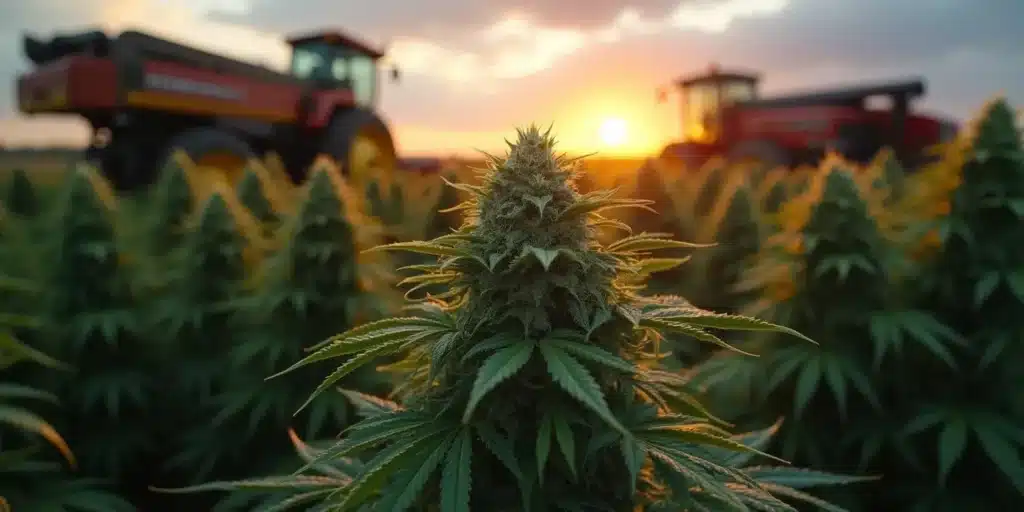
Managing Pests and Diseases
Common Pests Affecting Cannabis Plants
Pests are a common issue for cannabis growers and can severely impact the health of your plants if not addressed promptly. Knowing how to take care of a cannabis plant includes being able to identify and manage pest infestations effectively.
Common pests that affect cannabis plants include spider mites, aphids, and whiteflies. Spider mites are tiny, often too small to see with the naked eye, but they can cause significant damage by feeding on the plant’s sap. Aphids and whiteflies also feed on sap, weakening the plant and spreading diseases.
Regular inspection of your plants is crucial for early detection. Look for signs of pests such as yellowing leaves, tiny bite marks, or the presence of webbing on the underside of leaves. The sooner you catch an infestation, the easier it will be to control.
Natural Pest Control Methods
Using natural pest control methods is an effective and eco-friendly way to protect your cannabis plants without resorting to harsh chemicals. Integrated Pest Management (IPM) is a holistic approach that combines different strategies to manage pests while minimizing environmental impact.
One of the most effective natural methods is introducing beneficial insects such as ladybugs or predatory mites, which feed on common cannabis pests. These beneficial insects can help keep pest populations in check without harming your plants.
Neem oil is another popular natural remedy. It acts as both a repellent and a pesticide, deterring pests and disrupting their growth cycles. Spray neem oil on your plants every week or two, especially during the early stages of growth, to prevent infestations. Be sure to cover both the tops and undersides of the leaves.
Identifying and Treating Cannabis Diseases
Cannabis plants are susceptible to a range of diseases, many of which can severely impact your yield if not addressed promptly. Knowing how to take care of a cannabis plant includes being able to identify the symptoms of disease and taking immediate action.
Powdery mildew is a common fungal disease that appears as a white, powdery substance on the leaves and stems. It thrives in humid conditions and can spread rapidly if not controlled. To treat powdery mildew, reduce humidity levels and improve air circulation around your plants. A foliar spray of potassium bicarbonate can also help control the spread.
Root rot is another serious issue, often caused by overwatering or poor drainage. It results in brown, mushy roots and a foul odor, leading to wilting and yellowing leaves. The best way to prevent root rot is by ensuring your plants have proper drainage and avoiding overwatering. If root rot occurs, you may need to transplant the plant into fresh soil with better aeration.
By staying vigilant and taking proactive measures, you can minimize the risk of pests and diseases affecting your cannabis plants, ensuring a healthy and bountiful harvest.


